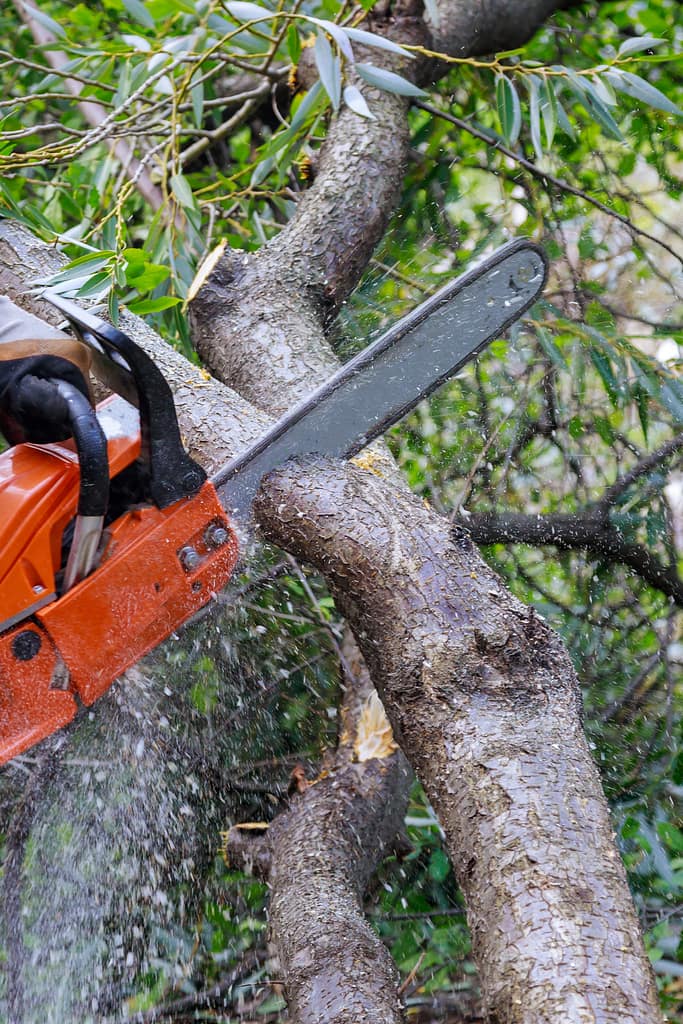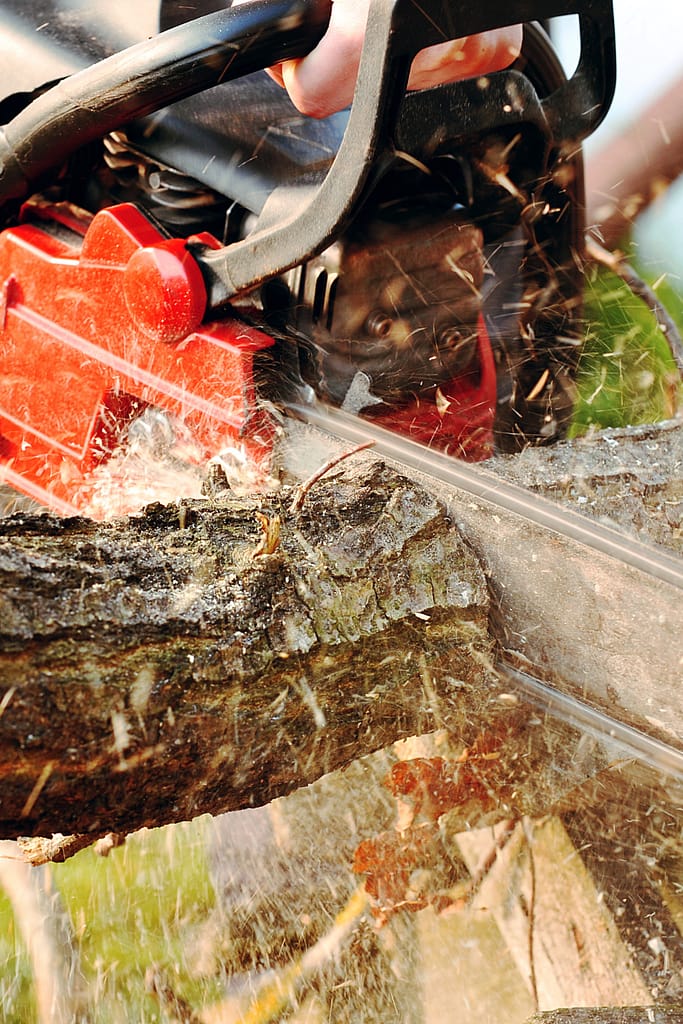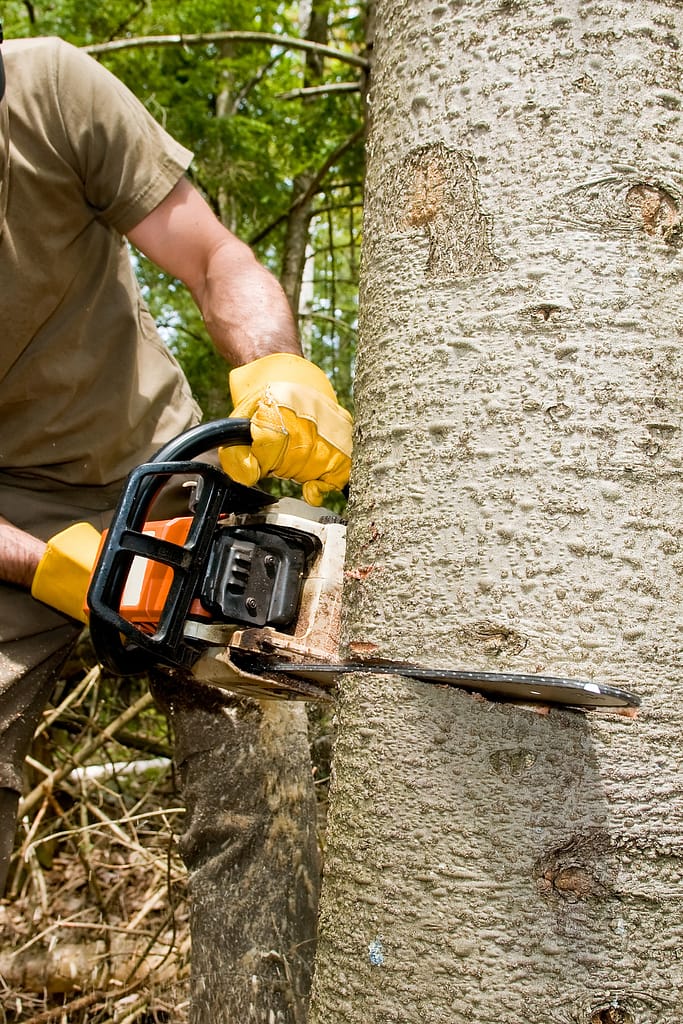Last Updated on November 23, 2024 by Tanya Janse van Rensburg
Cordless chainsaws offer convenience and portability, but using them safely requires knowledge and skill.
Many users make preventable mistakes that can lead to accidents or inefficient operation.
Proper preparation, correct handling techniques, and regular maintenance are essential for safe and effective use of cordless chainsaws.
Assessing the work area, ensuring proper protective gear is worn, and checking the chainsaw's condition are crucial before starting any cutting task.
Neglecting these steps can result in dangerous situations. Inexperienced users often overlook the importance of maintaining a firm grip, proper stance, and awareness of their surroundings while operating the chainsaw, all of which are key to safe operation.
If you're looking to buy cordless chainsaws online, it's essential to choose a model with excellent control and ergonomic features to support safe handling during use.
For example, the DeWalt 20V Max chainsaw is known for its lightweight design and comfortable grip, making it ideal for beginners.
In contrast, the Makita XCU03PT1 offers more power and longer battery life, making it better suited for more significant tasks while prioritizing user comfort and safety.


Proper selection and preparation of a cordless chainsaw are crucial for safe and effective operation.
These steps involve choosing the right tool, understanding chain tension, and managing the battery system.
Battery-powered chainsaws offer convenience and reduced emissions compared to gas models.
When selecting a cordless chainsaw, consider the battery voltage and amp-hour rating.
Higher voltage usually means more power, while higher amp-hours provide longer runtime.
Bar length is another critical factor. A 10-14 inch bar works well for light pruning and trimming.
Medium tasks like cutting firewood may require 16-20-inch bars.
Brand reputation matters. Husqvarna, DeWalt, EGO, Makita, and Stihl are known for quality cordless chainsaws.
Compare features, read reviews, and consider warranty options before deciding.
Weight impacts user comfort and fatigue. Lighter models are more accessible to maneuver but may sacrifice power or runtime.
Balance your needs for control and ease of use.
Proper chain tension is essential for safety and performance.
A loose chain can derail, while an overly tight chain increases wear and reduces efficiency.
Check tension before each use. The chain should snap back when pulled away from the bar but still move freely by hand.
Most cordless chainsaws feature tool-free tensioning systems for quick adjustments.
Clean the chain and bar regularly. Remove debris and apply chain oil to reduce friction and extend the life of components.
Some models have automatic oiling systems, but manual lubrication may still be necessary.
Sharpen the chain when cuts become slower or produce sawdust instead of chips.
Use a proper file and guide to maintain correct cutting angles.
Lithium-ion batteries power most cordless chainsaws. These batteries offer good performance but require proper care.
Store batteries at room temperature, away from extreme heat or cold.
Charge batteries thoroughly before the first use and after each session. Avoid completely draining the battery, as this can reduce its lifespan.
For extended cutting sessions, consider purchasing additional batteries. This allows for continuous work while depleted batteries recharge.
Clean battery contacts regularly to ensure good connections. Check for signs of damage or swelling, and replace batteries if these issues occur.
Some models allow battery sharing with other cordless tools from the same brand, increasing versatility and value.

Proper safety practices are essential when using a cordless chainsaw.
Operators must prioritize personal protection, employ correct handling techniques, and understand emergency procedures to prevent accidents and injuries.
Wearing appropriate PPE is crucial for chainsaw operators.
Safety gear includes a hard hat to protect against falling debris and a face shield or safety glasses to guard the eyes from wood chips and sawdust.
Ear protection, such as earmuffs or earplugs, is necessary to prevent hearing damage from the chainsaw's noise.
Operators should wear chainsaw safety chaps or pants made with cut-resistant materials to protect their legs. Steel-toed boots with non-slip soles provide foot protection and stability.
Cut-resistant gloves offer hand protection while maintaining dexterity for proper chainsaw control.
A high-visibility vest or jacket helps others identify the operator's location, especially when working in groups or near roads.
Proper handling of a cordless chainsaw is vital for safe operation.
Operators should use the thumb-wrap grip technique to maintain a firm grip on the saw with both hands.
The left hand should hold the front handle with the thumb underneath, while the right-hand grips the rear handle.
Maintaining a stable stance is crucial. Operators should keep their feet shoulder-width apart and avoid overreaching.
Cutting above shoulder height increases the risk of accidents and should be avoided.
To prevent kickback, operators must be aware of the chainsaw's "kickback zone" at the upper tip of the guide bar.
Cutting with this area can cause the saw to jerk back suddenly. Using the lower part of the bar reduces the risk of kickback.
Regular breaks are essential to prevent fatigue, which can lead to accidents.
Operators should also ensure the work area is clear of obstacles and bystanders.
The chain brake is a critical safety feature on cordless chainsaws. It stops the chain's rotation in case of kickback or other emergencies.
Operators should practice engaging the chain brake quickly and instinctively.
In the event of kickback, operators should maintain their grip on the saw and allow the chain brake to activate.
If the saw contacts the ground, immediately release the trigger and engage the chain brake.
Operators should establish an escape route before cutting. This path should be clear of obstacles and lead away from the fall direction of any cut material.
If the chainsaw becomes stuck in a cut, operators should turn it off immediately.
They should not attempt to force the saw free while it's running, as this can cause damage or injury.


Cordless chainsaws offer convenience and versatility but require careful handling to avoid common pitfalls.
Proper maintenance, safety gear, and correct technique are essential for safe operation.
Users should familiarize themselves with their tool's features and limitations.
By avoiding these mistakes, operators can ensure efficient cutting while prioritizing safety.